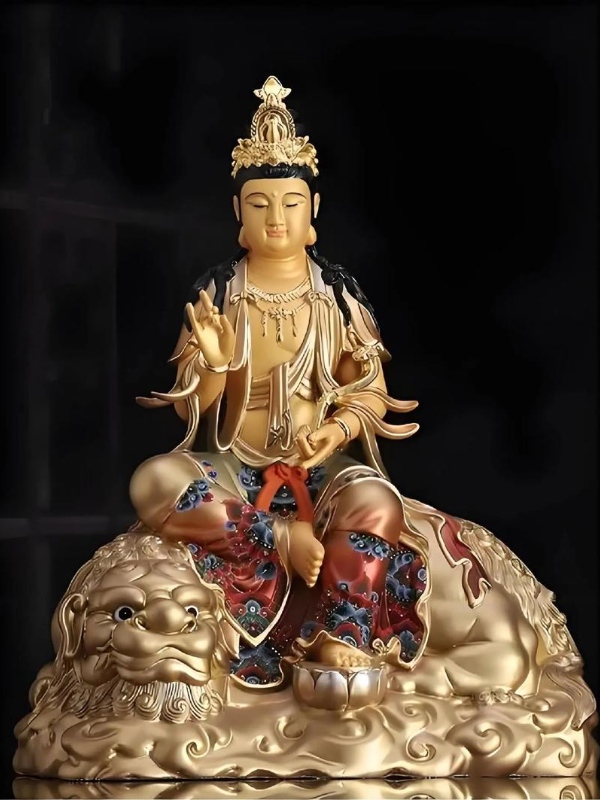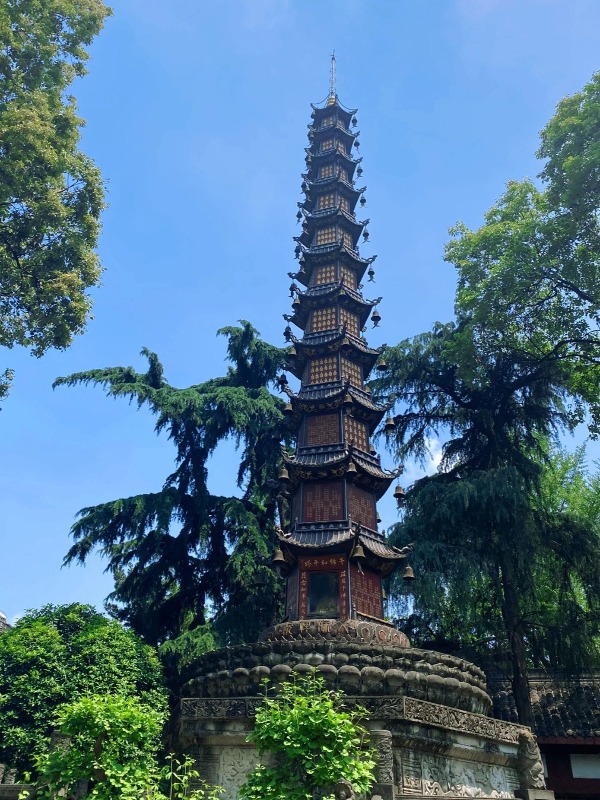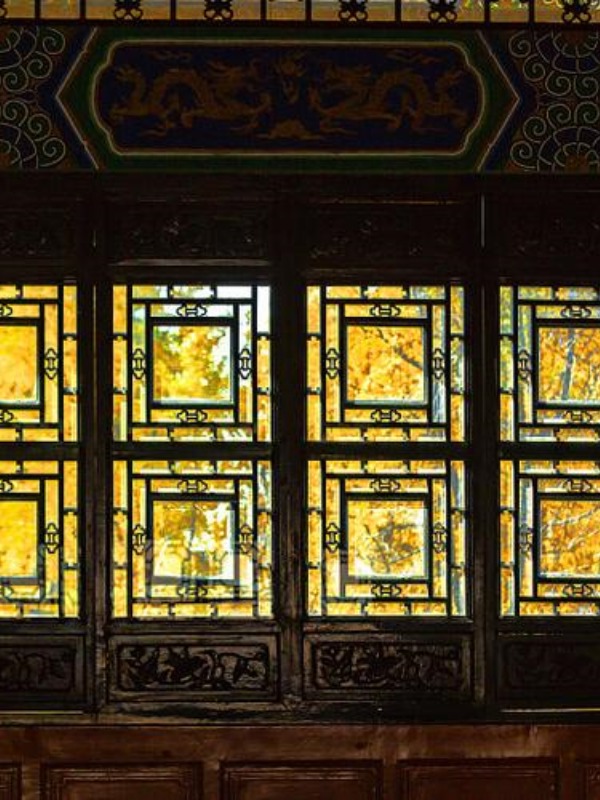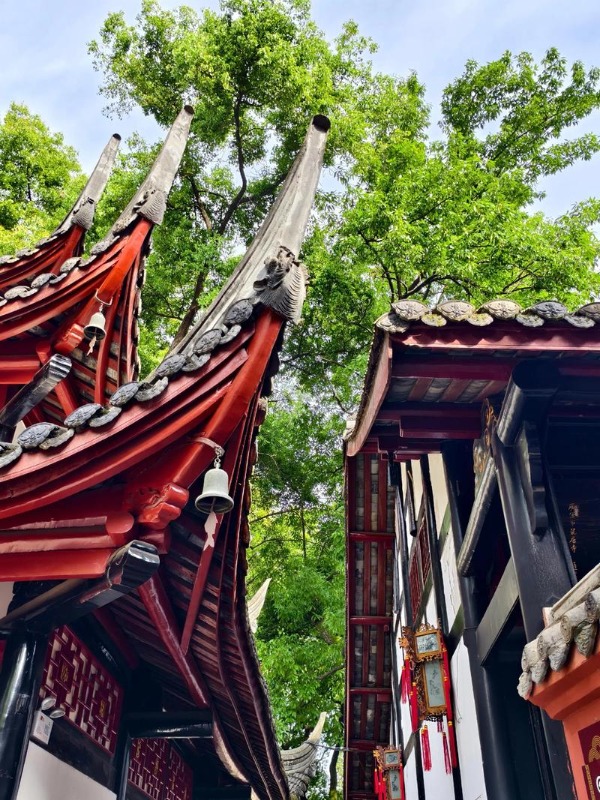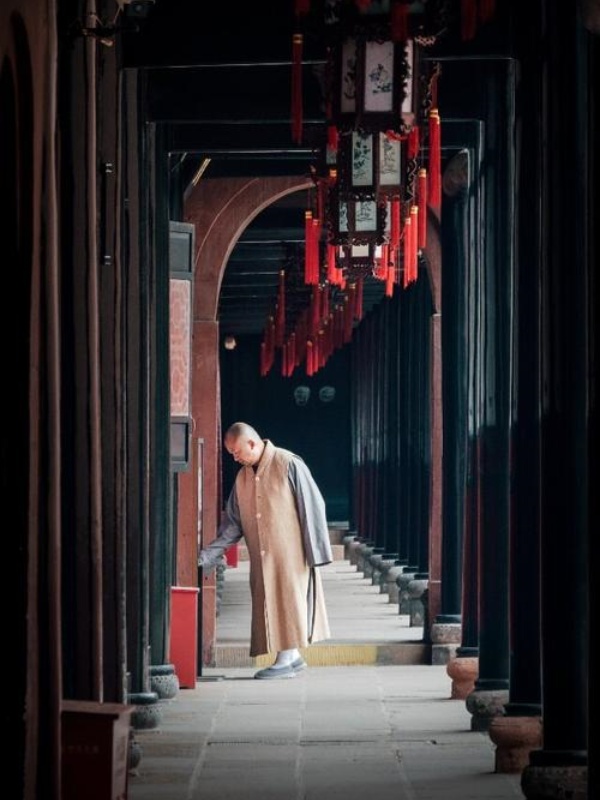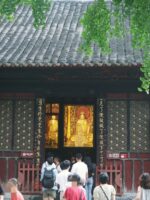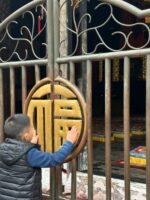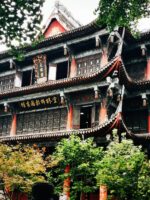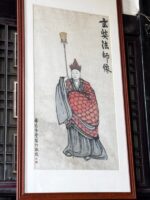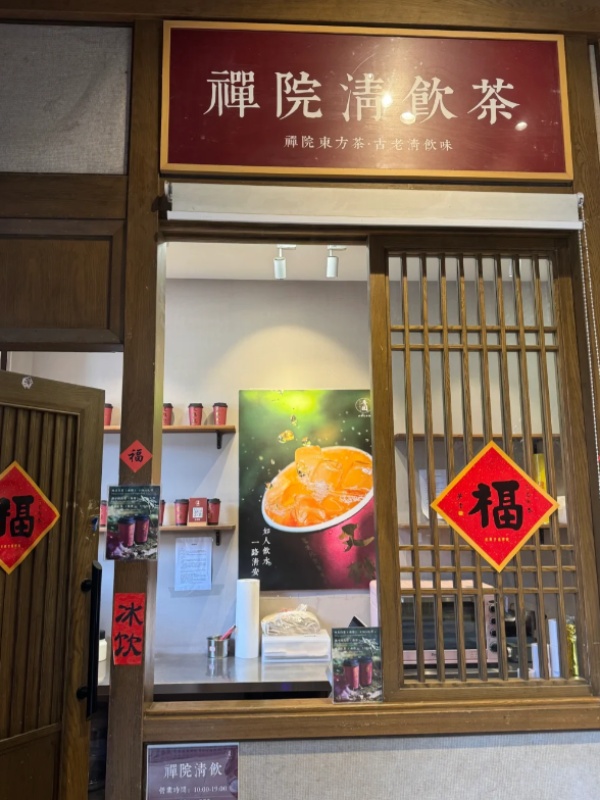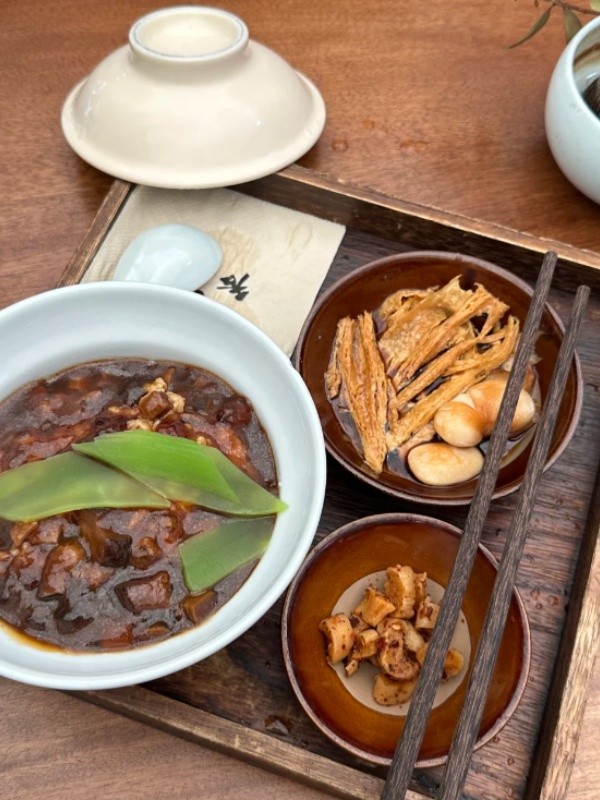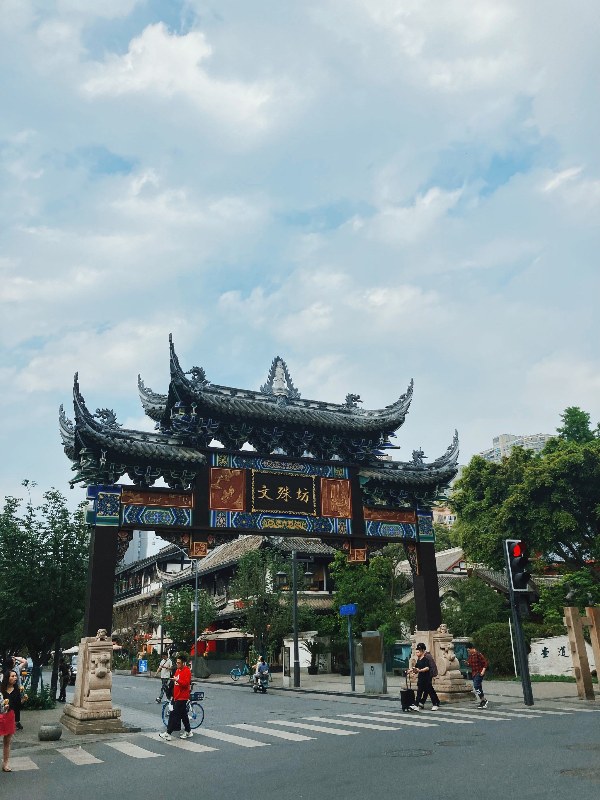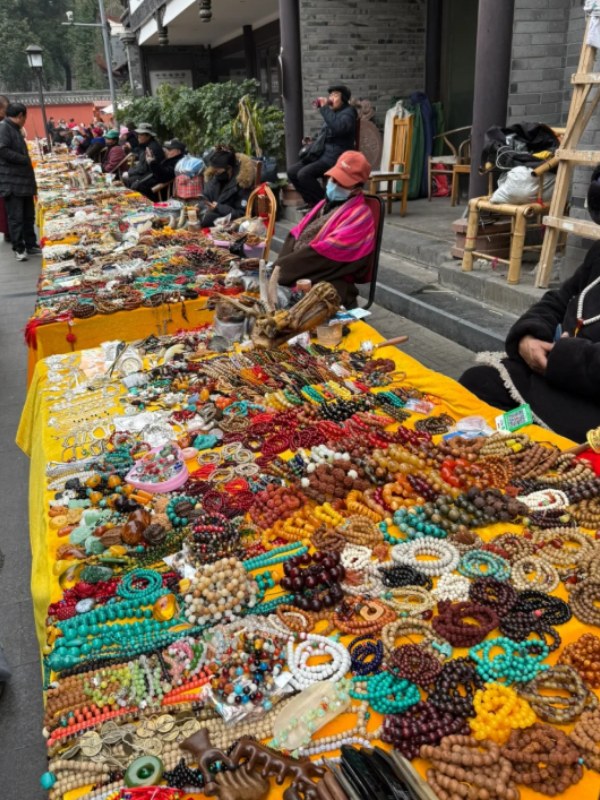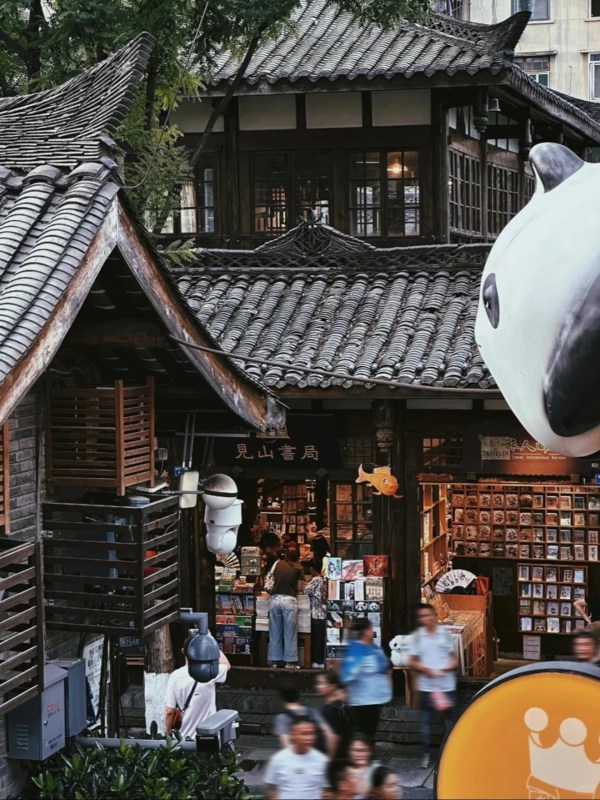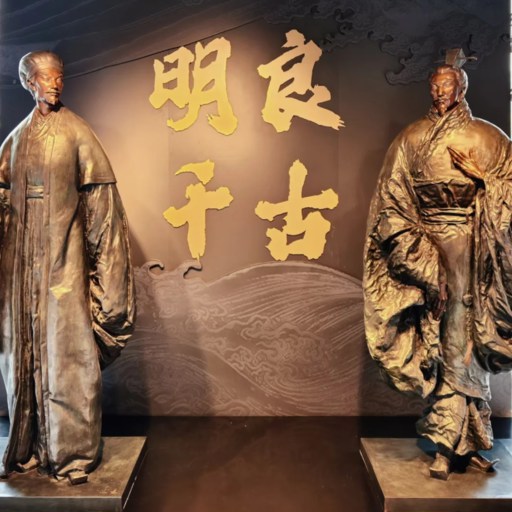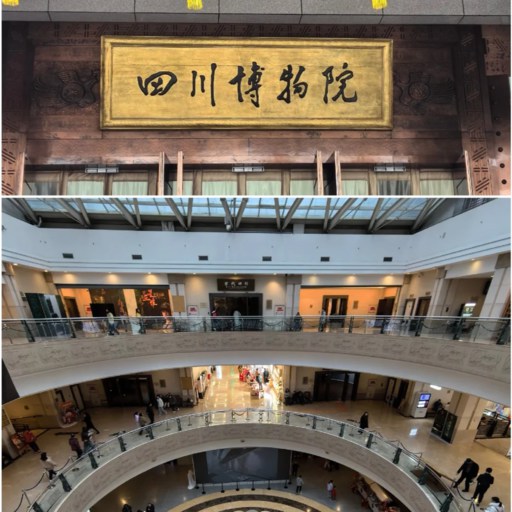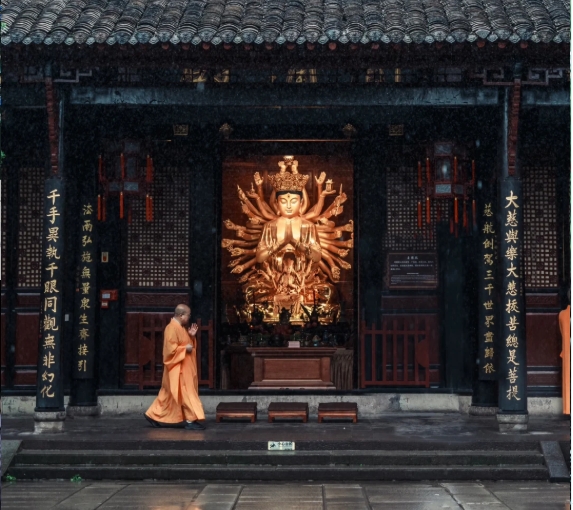
Chengdu Wenshu Monastery
Chengdu doesn’t hurry you, and Wenshu Monastery is the best proof of that. The second you step off the Line 1 metro, the air is different — smelling quickly of incense and rain-washed wood. Somewhere back behind the temple gates, a monk sounds the drum with quiet precision, and slowly this entire block begins to slow. This is not just another off-the-beaten-tourist-path stop, it’s one of the rare corners of the old city where you can still breathe (somewhat). When I arrived here, completely clueless about plans and armed with only curiosity, somehow I found myself passing half a day between prayer halls and tea cups. So if you’ve ever wanted to experience “the real Chengdu calm,” this is where to begin.
Quick Info: Wenshu Monastery
📍 Address: No. 66 Wenshuyuan Street, Qingyang District, Chengdu, Sichuan, China
⏰ Opening Hours: 09:00 – 17:00 (may adjust slightly in winter; check before visiting)
🕒 Recommended Visit Time: 1–2 hours
💰 Ticket Info: Free entry! Visitors are asked to register on-site or through the WeChat account “成都文殊院.”
A Thousand Years of Calm: The Story Behind Wenshu Monastery
- Manjushri Bodhisattva
- Thousand Buddhas and Peace Pagoda
Legendary Adaptations and Historical Transitions from Tang to Qing
Wenshu Monastery, they tell you, began life as Xinxiang Temple in the Tang dynasty, many centuries before the city knew what would become of modern Chengdu. Fires, wars, dynasties — it’s survived them all. It was rebuilt after destruction in the Qing period, and the temple took on its present name in that time. Some people in the area consider him to have been an incarnation of Manjushri, a Bodhisattva of Wisdom. You can still see Qing calligraphy ink on stone plaques, pale but proud, nestled beside prayer halls that endured five centuries of transformation. And maybe that’s the point — it’s not polished history, it’s lived history.
Regeneration In Fire: Survival Relics, Living Faith
The air wasn’t supposed to feel that heavy when I first entered the main hall — incense smoke curled into beams of light, and deep in my gut a bronze bell came audible. All those statues you see lined up there, the 300 Buddhas — they are not reproductions. Many cast moneys are recorded in the Song and Qing dynasties, each of which has differences in expression. (And only ten iron statues, a guide whispered, survived the great Ming fire — and they are still here.
Nearby is the Thousand Buddhas and Peace Pagoda adorned with more than a thousand statues of Buddha. This is one of Wenshu Monastery’s key relics and landmarks — a pagoda which represents peace, as well as Buddhist wisdom. It is odd, to imagine survival in metal and silence, not words. Close up, you can see patches where time literally left fingerprints.
Why the Locals Still Come Here to Pray
But despite the tourists, this is an active temple. Every morning at around seven, office workers and grandmothers alike light incense sticks. I came into contact with an old man at the Drum Tower who informed me that he’d been visiting there since the 1980s — “not for luck,” he said, “just peace.” Maybe that’s what keeps the monastery from dying: not its architecture but the rhythm of small, private faith. Chengdu residents don’t refer to the monument, they call it “文殊院,” whispered as if a habit. It doesn’t cost any money to get in, but you’re going to feel weird not tossing a small donation into the prayer hall; I promise.
The Temple Grounds: Architecture, Relics, and Daily Rituals
- Wooden Windows
- Corner of Wenshu Monastery
- Monks Strolling
Wandering through the halls of stone and wood, or else between two scents on the breeze
The Wenshu Monastery looks like a verse of living sculpture carved in stone and wood. Nearly all the main halls, consisting of tiny, contiguous courts that break but a passage, extend as a single axis This stretch directly separates the noise of urban life from tranquility. In the early morning, light filters down through overhanging eaves, sparkling across the ground in a way that looks like water in motion beneath a strong wind. Every door opens onto another picture or room of peace.
The elaborate wooden windows fling patches of sunlight on flowers and clouds, while bell and drum towers softly echo across the air. At intervals the incense, chanting and tread of soft footsteps convert the temple into something alive--a beat of faith and patience that has persisted for centuries.
Buddha’s Bone, Xuanzang’s Relic and Eternal Objects
Do locals might point out the Buddha bone relic upon your arrival at Wenshu Monastery. It is no more than a small piece yet deeply revered by Buddhists. It's said to have originated in India At temple festas, low chanting and dense incense hang in the air even for first-timers. A short walk away lies the skull relic of the venerable Master Xuanzang who travelled from China to India for scriptures. This is a tale most Chinese people have heard since childhood.
There is still more if you are not in a hurry The Song-dynasty iron guardian statues stand weather-beaten but proud, every detail still sharp after hundreds of years. Nearby, under museum light, the embroidered Diamond Sutra softly glows, its stitches neat and firm in silk. These objects need no explanation, they simply tell their own tale of patience, skill, and faith which has endured long after original wkers.
Monks, Drums, and the Rhythm of Chengdu's Spiritual Heart
As the sun sets, the sound of the temple drum rolls over the Qingyang District skyline Calm, heavy, almost hypnotic Sometimes local people quietly wait outside to hear through walls.
Monks still live in the dormitories here, and about eighty of them, if you're lucky, are seen playing ping-pong behind the meditation hall–they remind you that this is not just some relic of history; it lies at the very heart of Sichuan's present-day way, living pulse and all.
The Pilgrimage Path: A Step-by-Step Way to Pray with Heart
At Wenshu Monastery, the way you walk matters as much as what you pray for. Locals believe following a respectful order when offering incense helps keep your thoughts clear and your wishes sincere. The path isn’t complicated—but every stop has its own meaning, and slowing down here makes the difference between a quick visit and a heartfelt journey.
1. Manjushri Bodhisattva Hall (Second Main Hall)
Start your journey at the Hall of Manjushri, the Bodhisattva of Wisdom. People come here to pray for clarity, learning, and success in their work or studies. The statue sits directly opposite the entrance, radiant under the incense haze. Walk in slowly, make your bow, and circle clockwise before leaving. It’s not superstition—it’s rhythm, aligning your steps with your thoughts.
2. The “Fu” Character Stone (Between Iron Gates of the Third Hall)
Next, look for the large “福” (Fu) character engraved between the iron gates of the third hall. Locals say touching it brings good fortune—some press hard, some gently tap—but monks remind everyone: it’s not about strength, it’s about sincerity. Whisper your hopes if you like. It’s said the more you focus on gratitude, the more “Fu” follows you home.
3. Konglin Courtyard (Fourth Hall)
Here, “Konglin” means “forest of emptiness,” a phrase that captures Buddhist quietude. This courtyard is where most visitors stop talking without realizing it. The couplets on the pillars deserve a slow read; each line feels carved from stillness itself. Take a few breaths, feel the echo of your footsteps fade, and let that emptiness refill you with calm. It’s a place that teaches through silence.
4. Buddha Relic and Xuanzang Master Statue (Fifth Hall)
The final stop feels different—heavier, sacred. Inside, the Buddha’s relic and a statue of Master Xuanzang, the Tang-dynasty monk who journeyed to India, are displayed. Visitors often kneel here longer, heads bowed. Keep your phone away; let the quiet speak. If you’re lucky, you might hear the distant chant of monks from the side hall—a perfect way to end your prayer walk.
Walking this route isn’t about rules, but respect. Each hall draws a circle around patience, clarity, and gratitude—the essence of Wenshu’s calm spirit.
Tea, Prayer, and Peace: The Heart of Wenshu Monastery
- Tea House
- Monastery Vegetarian Meal
Where Tea Meets Faith
At Wenshu Monastery, tea isn’t just a drink—it’s a form of meditation. The old tea house under the cypress trees is said to be over a century old, serving locals and monks who come to pause between prayers. A cup of 盖碗茶 (gaiwan tea) costs about ¥25–35, and regulars will tell you each sip tastes better if you sit quietly and let the temple sounds sink in. I once overheard a monk explaining to a visitor that tea helps settle the mind before visiting the Buddha halls, aligning one’s thoughts with calm. Online reviews echo this, with many travelers saying it’s one of the most peaceful tea experiences in Chengdu.
Eating as a Ritual of Gratitude
Right beside the tea house lies the famous Wenshu Monastery Vegetarian Restaurant (文殊院素食馆), where even Chengdu’s spice-loving locals slow down. Dishes like braised mushroom noodles and lotus root soup cost between ¥30–70, all meat-free yet rich in flavor. A Trip.com user wrote that the “spicy beef” made from gluten was so convincing she ordered seconds. Monks often dine here, too, reminding guests that eating light isn’t deprivation—it’s discipline. In a city known for hotpot, this quiet meal feels almost sacred, connecting the body to the peace the temple teaches.
Together, tea, prayer, and food form the rhythm of Wenshu Monastery—a cycle of stillness that turns ordinary actions into spiritual moments.
Beyond Wenshu Monastery’s calm halls, discover more gems in Discover the Best Things to Do in Chengdu: Top Attractions for 2025.
How to Get There and When to Visit
Metro, Taxi, and Walking Routes Explained Simply
The easiest route: take Metro Line 1 to Wenshu Monastery Station (文殊院站), Exit K. From there, it’s a 500-meter walk northeast. Taxis from Chunxi Road cost about ¥18–25, depending on traffic. Walking from Tianfu Square takes around 25 minutes if you like city strolls. Chengdu’s DiDi app accepts foreign cards now, but cash still works fine for short rides.
Best Visiting Hours and Seasonal Tips
Morning visits (before 10 a.m.) are peaceful; incense smoke hangs like mist, and the monks chant softly. Avoid weekends and holidays if you dislike crowds. From March to October, Buddhist ceremonies happen often—beautiful to watch but busier. Winter (December–February) brings clearer skies and fewer visitors. I think late spring offers the best balance of weather and calm.
What to Bring and What to Avoid (Cultural Etiquette)
Bring tissues (no paper in restrooms), a small umbrella, and wear modest clothes—shoulders covered, no loud colors. Taking selfies inside prayer halls is frowned upon, though the courtyards are fair game. If you buy incense, light only one stick per shrine—locals see excess as disrespect. It’s small things like this that make your visit feel genuine.
Nearby Streets and Local Life Around Wenshu Monastery
- Wenshufang
- Antique Markets
Wandering Through Wenshufang and Qingyang District
Step outside the temple gate and you’re in Wenshufang, one of Chengdu’s oldest neighborhoods. The shift from incense to street barbecue is instant. Stalls sell clay teapots, handmade fans, and little red charms. The pavement’s uneven, the signs mix English and Chinese (“Buddha Zen Hotel” looks oddly poetic in neon). This district feels old but lived-in, not curated. A ten-minute walk brings you to Qingyang District, where locals sip bubble tea beside ancient walls.
Antique Markets, Street Snacks, and the “Slow Chengdu” Lifestyle
There’s an antique market just two blocks east—half junk, half treasure. You’ll find Mao-era posters, jade bracelets, and dusty cassette players. Prices are negotiable but unpredictable; I once saw a bronze bell tagged ¥1800, then sold for ¥600 after ten minutes of tea-fueled haggling. Street snacks here are a must: grilled tofu (臭豆腐), rabbit head, and sweet rice cakes. If you’re new to Sichuan spice, go slow—it’s not for show.
Best Places to Stay Nearby for Foreign Travelers
If you want to stay close, BuddhaZen Hotel is just 3 minutes’ walk away and accepts foreign guests. Rooms start around ¥480 per night, with tea service included. For budget travelers, Mix Hostel (near Wenshuyuan Metro) remains foreigner-friendly and cozy at ¥120–150. Both are available on Ctrip, and the area feels safe even at night.
Done exploring Wenshu Monastery in Chengdu? Continue your temple journey with Chongqing Temple Tour 2025: Three Distinct Styles at Luohan, Huayan & Ciyun.
FAQs — Things Travelers Often Ask
Q: Is Wenshu Monastery free to enter?
Entrance to Wenshu Monastery is free, and you can enter anytime during open hours. You will notice donation boxes near the main hall, encouraging visitors to leave offerings if they wish. Many travelers drop a few yuan before exploring the prayer halls. The act feels meaningful because it supports the monks and keeps the temple clean. Even without tickets, you sense that every visitor adds to the calm atmosphere. Remember, silence near the altars keeps the experience respectful and peaceful.
Q: Can I take photos inside the temple?
You can take photos only in open courtyards at Wenshu Monastery, not inside the main prayer halls. The temple values respect more than strict rules, so keep your camera low and quiet. Avoid photographing monks or burning incense rituals, which belong to private devotion. When unsure, watch what locals do and follow their lead. The light filtering through red wooden beams makes perfect shots without needing to intrude. That way, your photos carry the place’s spirit, not just its image.
Q: What’s the best time of day to visit?
The best time to visit Wenshu Monastery is early morning when air smells of rain and incense. Monks chant softly, and sunlight spills across the stone paths. After four in the afternoon, the crowd thins again, and the temple feels timeless. Avoid midday when tour groups gather near the Drum Tower. If you love quiet travel moments, mornings will feel rewarding. Chengdu’s soft light makes photos beautiful, and every corner glows differently as the day ends.
Q: Are there English signs or guides available?
Inside Wenshu Monastery, you will find English and Chinese signs near key halls. QR codes on plaques give short histories and directions when scanned. You don’t really need a guide unless you study Buddhist art or scriptures. The temple’s layout is clear, and monks help politely if asked. I once saw a volunteer explaining the Jade Buddha to tourists using translation apps. So language rarely becomes an issue here for visitors.
Q: Is the vegetarian restaurant open to non-Buddhists?
Yes, everyone can eat at the vegetarian restaurant inside Wenshu Monastery grounds. Locals, tourists, and monks share long tables over bowls of tofu noodles. The food contains no meat but tastes surprisingly rich with mushrooms and chili oil. You can order using pictures or numbers on the menu. Most foreigners pay with cards or WeChat easily. It’s calm, friendly, and open to all who respect the space.
Q: Can I join prayer or meditation sessions?
At Wenshu Monastery, you may observe morning prayers quietly near the side hall. Visitors are welcome to watch but not disturb chanting monks. Some travelers have been invited to sit by the incense burner when showing respect. Keep phones silent and hands folded if you join. Meditation sessions happen informally, so timing depends on temple activities. Just walking slowly here already feels like gentle meditation.
Q: How crowded does it get during weekends?
Weekends at Wenshu Monastery can feel busy, especially around noon when tour groups arrive. If you prefer silence, come on weekdays or early morning. Locals often visit before work, lighting incense quickly then leaving. During festivals, the crowd doubles, filling every courtyard with smoke and voices. Even then, corners near the tea house stay peaceful. Plan ahead if you like space and calm moments.
Q: Is Wenshu Monastery wheelchair accessible?
Wenshu Monastery offers smooth stone paths in most courtyards, making access manageable. However, some older halls have steps without ramps. Visitors using wheelchairs can still explore main areas and tea houses comfortably. Ask attendants at the entrance for assistance; they usually guide visitors to easier routes. With patience, you can enjoy much of the temple’s beauty at ground level.
Q: Are there other temples nearby worth visiting?
Yes, Qingyang Palace, a Taoist site about fifteen minutes away, pairs perfectly with Wenshu Monastery. You can take a short taxi or even walk through shaded lanes. Qingyang Palace shows another side of Chengdu’s spirituality—Daoist calm versus Buddhist focus. Visiting both on the same day reveals how the city blends beliefs. It feels like exploring two hearts of one culture.
Q: Can I buy souvenirs inside or around the monastery?
Around Wenshu Monastery, you will find small shops selling incense, tea, and calligraphy scrolls. Prices vary, but most items cost between fifteen and fifty yuan. Tea leaves from the temple garden make lovely gifts. Some vendors also sell hand-carved Buddha charms at fair rates. You can pay by Alipay, cash, or card. Bargaining isn’t common here because sellers keep prices honest.
